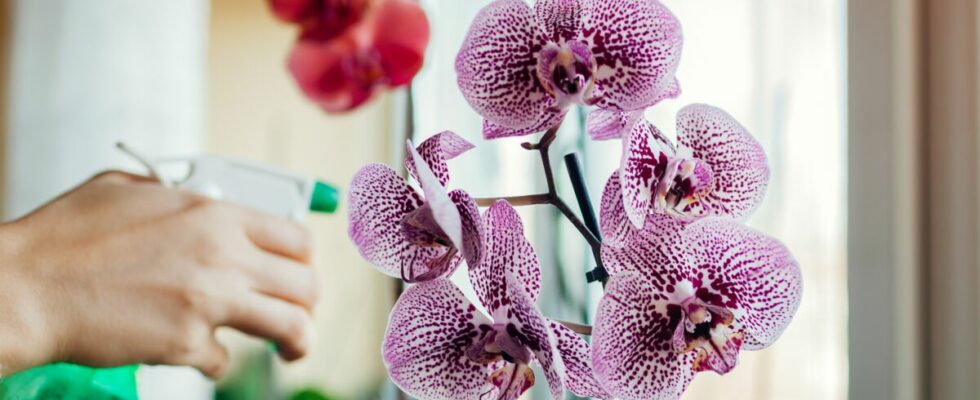For healthy orchids, it is recommended to take care of them by ensuring good watering (or spraying) as well as a rather humid environment. But the most airheaded might forget it in a corner or simply not know when or how to water it. Don’t panic, here’s a technique for those who don’t have a green thumb!
Bringing an orchid to life without soil or substrate
The orchid, even if some members of its species grow in France, is generally a plant found in tropical, hot and humid environments. It therefore requires maintenance with a good quantity of water, indirect light and a reasonable minimum temperature (not below 10-12°C ideally). It can therefore thrive in our interiors, provided that we guarantee it some good conditions. And in particular to provide it with consistent watering, so that its roots do not dry out. You can carry out a “basinage”, that is to say, soak it in lukewarm water so that it drinks the water through the roots. Or, you can test this technique found on social networks, and approved by many gardeners, especially the most forgetful ones. We’ll explain it to you.
How to care for an indoor orchid in water?
Generally, the orchid does not live in the ground (apart from a few hexagonal species, explains Denis Larpin of Natural History Museum). They cling to trunks, stones and can even live suspended. When purchased, they are in pots and their roots surround a substrate, which is not potting soil or earth but plant material made of wood chips, bark and moss. But did you know that some orchids can do without it and live in water?
As demonstrated by Clare Hooper, a colorful and ideas-filled Brit, known on Instagram for her tips and tricks videos. In a video, she displays her freshly purchased orchid and shows how she unpots it and then removes its roots from the substrate. If necessary, at this stage, you can cut the roots that are too damaged. Then she places the roots of the orchid in a glass container filled with water, here a bottle of recovery soup but she explains that you can also use a jar or jam pot. The roots should all touch the water. She then advises changing the water every month, or when its level drops and the roots are no longer submerged.
